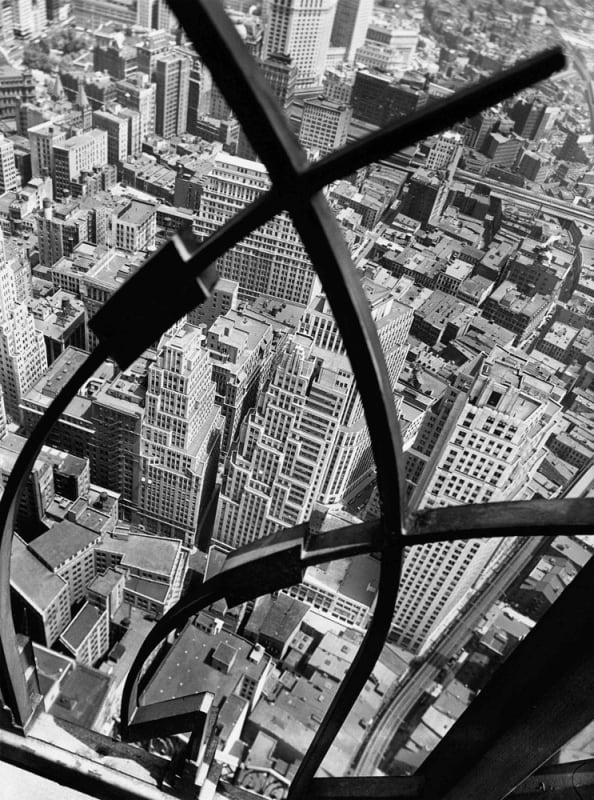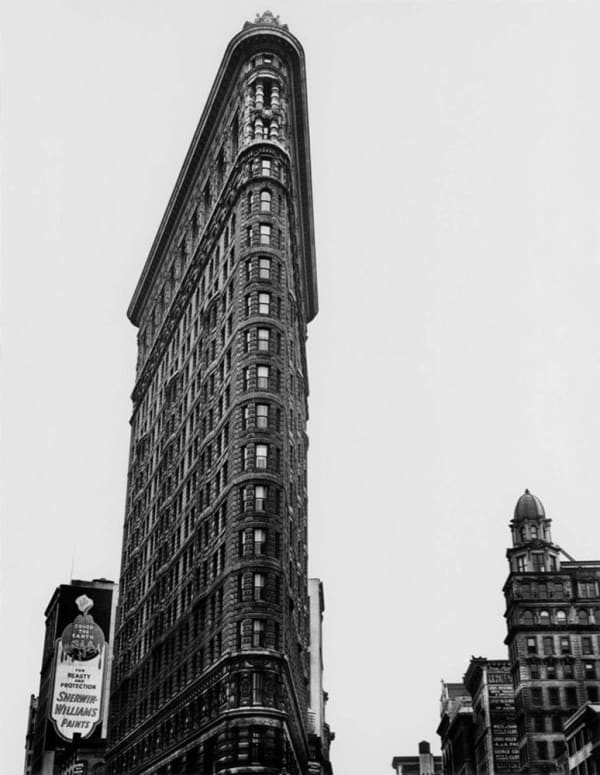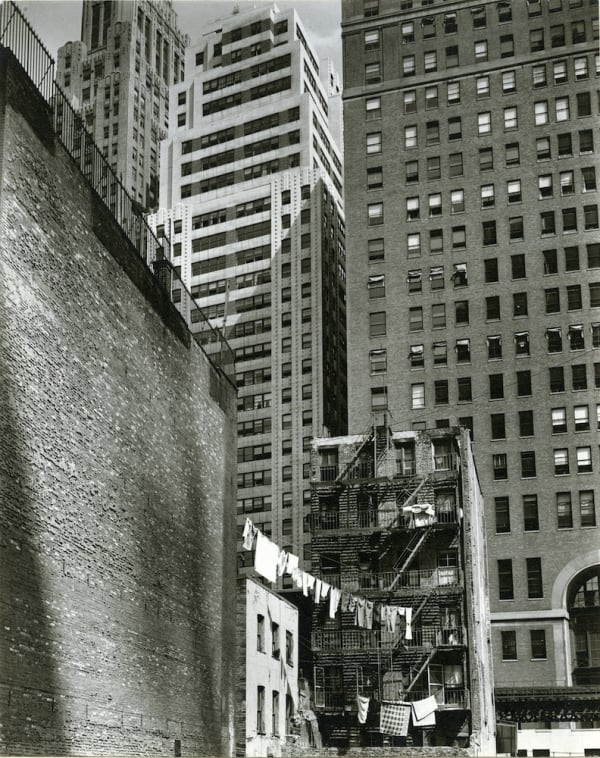Berenice Abbott
We’re happy to invite you to the show of Changing New York with a selection of prints of Berenice Abbott.
During the entire - ten year period of the project - 1929 -1939 - Berenice Abbott produced the finest record ever made of an American City. Her point was graphically to capture the times - to make a record, in as artistic a fashion as possible, that would be of use to historians, sociologists and even art critics.
-
 Berenice AbbottCity Arabesque form the roof of 60 Wall Street Tower, New YorkTirage gélatino-argentique postérieurDim. papier: 40 x 50 cm
Berenice AbbottCity Arabesque form the roof of 60 Wall Street Tower, New YorkTirage gélatino-argentique postérieurDim. papier: 40 x 50 cm -
 Berenice AbbottConstruction of old & new, 38 Greenwich Street, New YorkTirage gélatino-argentique postérieur33,5 x 26,6 cm
Berenice AbbottConstruction of old & new, 38 Greenwich Street, New YorkTirage gélatino-argentique postérieur33,5 x 26,6 cm
Dim. papier: 40 x 50 cm -
 Berenice Abbott, Flatiron Building, Broadway and Fifth Avenue, New York, 1938
Berenice Abbott, Flatiron Building, Broadway and Fifth Avenue, New York, 1938 -
 Berenice Abbott, Construction of old & new from Washington Street #37, 1936
Berenice Abbott, Construction of old & new from Washington Street #37, 1936
Berenice Abbott "Changing New York"
In February 1929, Berenice Abbott returned to United States for a short visit. She was not prepared for New York in 1929 but the city appeared to her like one gigantestic subject for a photograph that needed to be taken. Her excitement with the city demanded that she shift her focus to an entirely new field.
In Paris in 1929, Berenice Abbott’s work had never been better and her friends were there. She was torn, but her mind was made up. She had to photograph New York. There was no reason why she couldn’t set up a new portrait business there.
She had received good notices in the New York press and she felt she could easily build up a reputation and a clientele. In her spare time, she would photograph the city.
But the task was more difficult than she had imagined. She was unprepared for many things : the increased cost of living, the prejudice against women in photography, the outright competitive hostily among many American photographers and the preoccupation with strictly commercial values, which were foreign to her.
The absence of work discouraged her from carrying out her original plans of working a portraits part of the time to earn expenses and devoting the rest to roaming New York, familiarizing herself with new aspects of the city.
Because of her portrait business was nonexistent, more of the time was occupied in taking new photographs of the city. But to photograph the city proprely she needed money. And all the attempts to obtain outside funding for his project now calling Changing New York, were rejected.
In the spring of 1935, the New School for Social Research asked Abbott to give a course in photography. She was terrified of teaching, but the prospect of a modest salary tempted her. Finally, late in september 1935, Changing New York became an official project supported by a federal government organization, the Federal Art Project. Finally after six years, she had found funding. After a year of work, it was obvious to Berenice Abbott that Changing New York was a never- endind job. The more she did, the more she realized there was to do. By the end of the year, however, indications were that all was not well with her project, at least in the eyes of the Federal Art Project. There was intense rivalry within the organization and the jealousy of other photographers and staff members have killed the project. When The Federal Art Project asked her to abandon Changing New York to remain a staff regular photographer, she resigned.
Because the photographs express the spirit of the age rather than simply show a specific location at a specific moment, they transcend time and exist as permanent statements.
When Changing New York was finished, she didn’t want to sacrifice any more.
Changing New York had been a ten-year struggle.







